10 Best Horror Book-to-Movie Adaptations Ranked
Here all the best horror movies based on books.

It’s an age-old debate. What’s better: the book or the movie? Though the source material often comes out on top — as not every work of fiction seamlessly transfers to the screen — some on-screen adaptations rival their pageturners.
Some films tinker with the source material so much that different characterizations and thematic undertones surface. Other adaptations use the camera as a mere translational device — taking the story virtually scene-by-scene in a daring attempt to transfer the book’s precise message directly to the screen.
When it comes to the horror genre, both approaches have been explored to great effect – as well as interpretations that walk the tightrope, paying homage to the book while creating something unique. Below are the top ten horror book-to-movie adaptations ranked from least impressive (though still utterly top-tier) to most groundbreaking.
10. Carrie (1976)
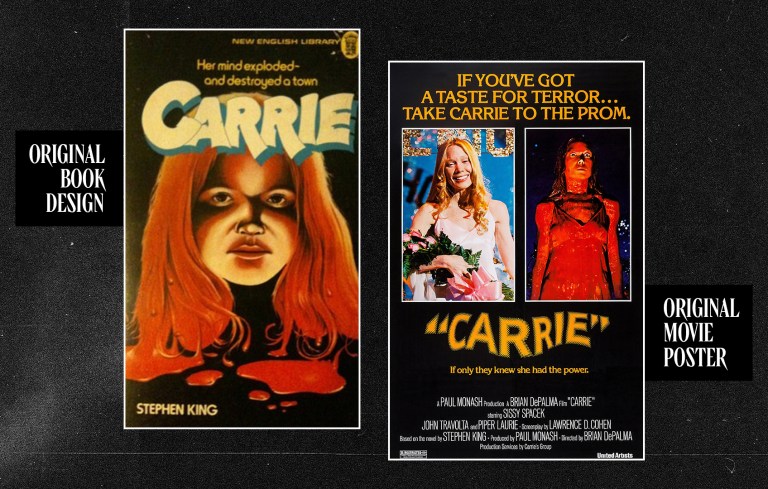
1976’s Carrie, from a screenplay written by Lawrence D. Cohen (who also contributed to the teleplay for 1990’s It), is based on the Stephen King novel of the same name. The film masters Hitchcockian suspense — even opening with an homage to Psycho’s shower scene — and culminates in an infamous firey blood bath at prom.
Horror aside, Carrie is a poignant exploration of isolation and abuse, as viewers can’t help but empathize with an adolescent girl whose torment and angst surge in the absence of a safe haven. Carrie’s mother is a bible-thumping abuser who punishes her daughter seemingly for existing. She clings to religion, yet is reminiscent of a witch; in this instance, religion becomes the devil pitted against a secular coming-of-age. And when Carrie exits her home, there is no reprieve awaiting her. She walks the halls of a school where she is a punching bag for every bully.
The film arguably goes a bit further in humanizing Carrie than King’s novel does, and in doing so, balances the character’s murderous rage with her status as a victim pushed to the brink. The audience justifies, excuses, rationalizes, and even understands the protagonist (antagonist?), making Carrie a fright fest that delves deep into the darkest crevices of the human psyche to ask, “What are we willing to forgive in the face of trauma?” With masterfully erratic camerawork that soars and plunges, as well as an effortless Sissy Spacek as the tortured-turn-torturer, Carrie remains one of the most celebrated Stephen King adaptations of all time.
The movie, timeless in the themes explored, was remade in 2013 with Chloë Grace Moretz in the tile role. However, failing to imbue the tale with an original spark, the film was deemed a mostly derivate and unnecessary remake aimed at making a quick buck.
9. Rosemary’s Baby (1968)

Roman Polanski’s Rosemary’s Baby is notably one of the most faithful book-to-screen adaptations, as several verbal exchanges are pulled directly from Ira Levin’s novel. The narratives are virtually parallel from start to finish, as such was vital to Polanski when creating the film.
Premiering in 1967 — at the height of second-wave feminism and before birth control pills were widely accessible — the film is a feminist horror tale, revealing the depths of inequality (and consequentially gender-based violence) inherent to a patriarchal society.
The Satanists who live next door are not the film’s most terrifying players. Look at the doctors who force Rosemary into decisions she is not comfortable making. Look at her husband who commits the film’s most unforgivable act. The true villain is a society that relegates women to second tier — and those who contribute to and benefit from its ugliness. Rosemary is “Mrs. Woodhouse” at all times. She is the mother of Satan’s spawn. She is always and forever more “someone to someone else.”
Unfortunately, Rosemary’s Baby remains quite relevant in modern times. As poignantly stated by Slant Magazine, “So long as there are men in power who are still fuzzy on the definition of rape, Rosemary’s Baby will endure as a cautionary tale.”
8. The Candyman (1992)
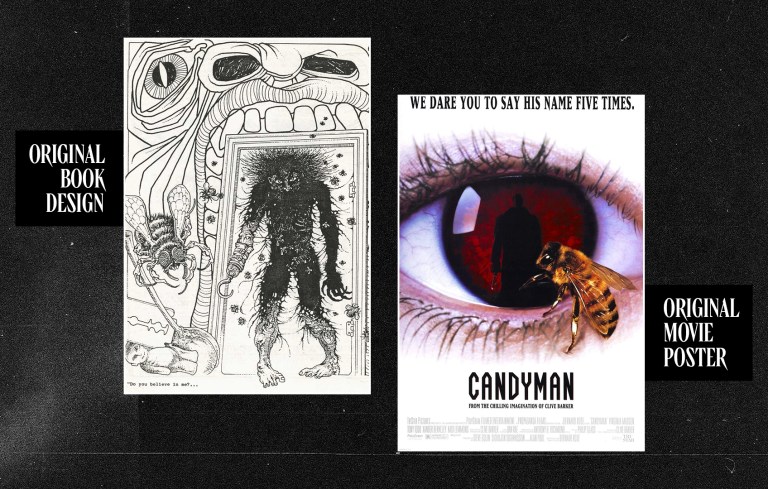
The Candyman is adapted from the 1985 short story The Forbidden from Books of Blood written by Clive Barker (Hellraiser, Night Breed). The story follows Helen after finding out about a knife-wielding figure of urban legend, The Candyman – who neighborhood locals believe to be responsible for a recent murder.
Riddled with narrative ambiguities that are never fully resolved and fantastical elements that sustain a haunting atmosphere, The Candyman is a masterclass in horror open to interpretation. Its messages shift and grow with time, yet remain ever-relevant as the film examines class, gentrification, and race.
Director Bernard Rose plays with audience expectation, waiting to reveal the titular villain until the film’s final frames. And when a 6’5” Tony Todd hits the screen, his physically commanding presence (possessing a bee-infested torso and a hook for a hand) coupled with a deep and raspy voice is equal parts intoxicating and unsettling. Candyman is a shiver-inducing chill that offers up both cerebral scares and gory thrills.
The 2021 remake extends its predecessor’s lore, taking the former film’s outward gaze and directing it inward. The innocent becomes the perpetrator. The film still contemplates race and gentrification but reworks the story to distinctly paint Candyman as both a murderer and a protector. For, lest we forget Candyman’s legend was first spun to help Cabrini Green’s Black populace cope with police brutality and white gentrification.
7. The Silence of the Lambs (2001)
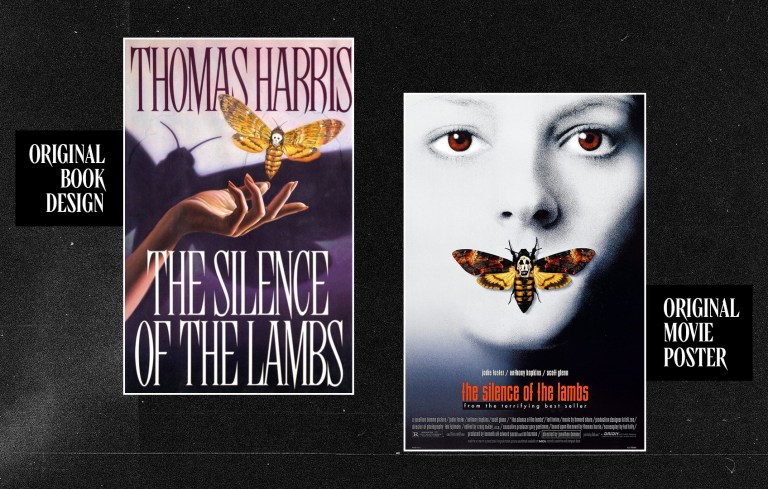
In The Silence of the Lambs, Anthony Hopkins and Jodie Foster give two of the most critically-acclaimed performances in horror movie history as Hannibal Lecter and Clarice Starling, respectively.
Hopkins upholds an unnerving disposition as Lecter, bringing a steady, authoritative speech pattern and an analytical, sharp-eyed gaze to the role, which earned the actor the 1992 Oscar. He’s somehow charming — boasting a calculated breed of seduction —despite his unpalatable proclivities. Foster also took home the golden statuette for her convincing performance as a proud and determined, yet vulnerable and self-aware agent, ceaselessly retaining composure in the face of danger and overt sexism.
The film (and its stars) can thank author Thomas Harris for the pointed characterizations and sharp tension-building skills inherent to his novel, which transferred seamlessly to the screen. The book and movie laid the groundwork for many future films that fall under the detective v. serial killer subgenre of psychological thrillers. Think Seven, Prisoners, Zodiac, The Bone Collector, Copycat, American Psycho…The list is neverending.
Hannibal Lecter’s journey also continued after The Silence of the Lambs via Hannibal (2001), The Red Dragon (2002), and Hannibal Rising (2007). A TV show starring Mads Mikkelsen as the cannibalistic serial killer also premiered in 2013.
6. Dracula (1931)
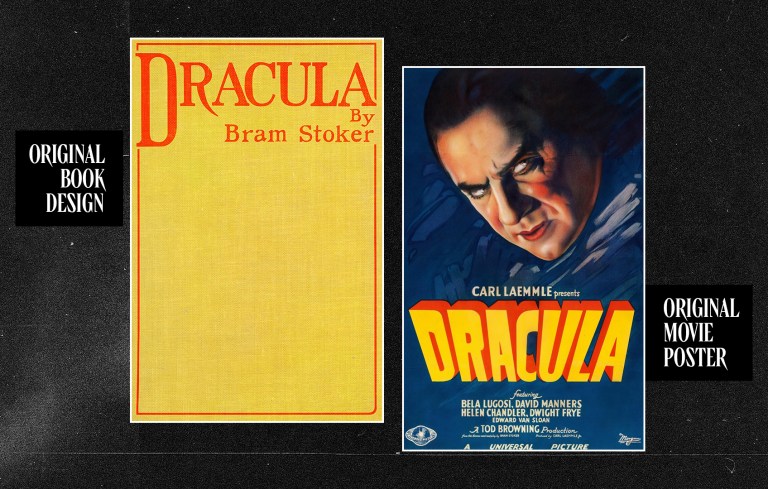
Though Dracula is not the first vampire story ever written, as that credit belongs to John Polidori for his 1819 novel The Vampire, The Count is unquestionably the most notorious of the bunch. The blood-sucker with pale white skin and slick black hair gave rise to many infamous garlic-fearing night lurkers of the silver screen.
Abraham Stoker’s Dracula has seen countless interpretations. There have been lighthearted approaches like the animated Hotel Transylvania and gothic comedy Dracula: Dead and Loving It, as well as contemporary action-packed forays like 2014’s Dracula Untold, which set out to tell an origin story preceding Stoker’s narrative. Despite the many Dracula depictions out there, the Bela Lugosi-starring 1931 film remains one of the most celebrated, notably pulling from both the stage play and Broker’s novel.
The film, all these years later, remains a prime example of atmospheric triumph, retaining an eerie and creepy feel via gothic set design and gloomy shadows. And, of course, The Count’s cape is one of the film’s most memorable shadows — and arguably the most visually iconic aspect of Dracula himself.
Lugosi’s strong and odd gestures, his deep and distinguished Hungarian-accented voice (often parodied in pop culture) and undeniable sex appeal has undoubtedly shaped the rise of the “sexy but sinister” vampire seen in films like The Lost Boys, Interview with the Vampire, and Fright Night. Without the 1931 film, it’s nearly impossible to imagine what a single vampire-based movie would look like today.
5. Frankenstein (1931)

Mary Shelley’s Frankenstein is the quintessential monster tale spotlighting the great consequences of unbridled human ambition. What happens when you tinker with the natural way? What happens when you play god? What will come of a man who alienates himself in the pursuit of knowledge? Who is the real monster — the one who seeks revenge or the one who deserves it? The story contains most (if not all) of the prevalent themes seen in contemporary creature features.
1931’s Frankenstein tinkers with the source material slightly to render a more cinematic experience but stays true to the film’s underlying themes. However, there is one major difference worth mentioning, for it alters the story’s takeaways.
In the novel, the creature becomes fully sentient and articulate, able to contemplate his own existence. He seeks to harm Dr. Frankenstein for what he has done, and it is abundantly clear via the novel’s dialogue. In the movie, he is more of a bumbling brute who moans and destroys with little to no explanation.
In the case of the novel, the monster is a victim-turned-aggressor and readers can empathize while still condemning his violence. Such an interpretation makes for a more gray story with two semi-antagonists / semi-protagonists existing in the morally ambiguous. The movie’s choice plainly illustrates the Doctor as the wrongful one by leaving no room to see the creature as anything more than a mistake of man. The movie argues that if the creature is so limited, he cannot be held accountable, directing all judgment directly to the doctor. Victor also dies in the novel, receiving the ultimate punishment, but in many later cinematic interpretations, he is spared — likely to preserve a “happy ending.”
From the 1931 movie to the 1994 movie, Frankenstein’s themes are timeless. So long as creators find a way to contemporize the story while staying true to Shelley’s work, the reinterpretations will likely continue – even if in more subtle ways via films that change the story but retain the themes. Think RoboCop, Edward Scissorhands, The Fly, Moon, and The Skin I Live In.
4. Jaws (1975)

Man vs. nature. Man vs. greed. Jaws presents the dangers of capitalism pushed to the brink. How many lives are you willing to sacrifice to keep your profitable beach town running, as a monstrous shark devours life after life?
The basic narrative structure and thematic elements seen in Peter Benchley’s 1974 novel remain in Steven Spielberg’s cinematic masterpiece. The movie has been hailed as one of the greatest book-to-screen adaptions ever rendered. However, similar to some Frankenstein films, the movie also decides to save one of its main characters — Hooper, who dies in the book.
In the instance of Jaws, despite all the deaths that happen prior, man emerges minimally “triumphant” over nature, as one shark hunter is left standing. Obviously, nature’s tally remains far greater, but it’s still a consequential difference. However, this call was not exactly narratively driven. The crew on Jaws happened to get strong footage of a real shark who got attached to the boat that was connected to the film’s shark cage. Behind the camera, it looked like the shark was attacking an empty cage, as opposed to attempting an escape. They used the footage, as it made for a great scene, but because the cage was empty, Hooper had to escape, evading death.
The movie focused on man vs. nature a bit more than man vs. greed, as the novel also makes the mayor part of the mob. In the book, the Mayor wants money for his own selfish desires, not for the benefit of the whole town. However, both themes are evident in each work. Leave it to Spielberg to create a film that’s grisly, terrifying, character-driven, and ceaselessly suspenseful — all while existing as an allegory for the failed institutions of man.
3. The Exorcist (1973)
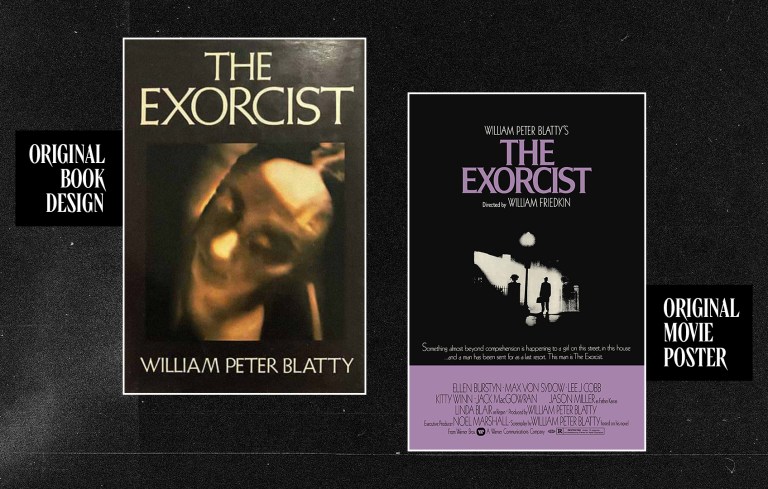
William Peter Blatty’s The Exorcist hit bookshelves in 1971, only two years before the movie hit the silver screen, and audience members walked out in sheer terror. It was so unsettling. So gruesome. So satanic. A then-less desensitized audience couldn’t bear witness to Regan MacNeil’s demonic possession and subsequent acts of heinousness.
With remarkable special effects for the 1970s, the movie manifested the novel’s supernatural elements with an eerie, even somewhat magical, finesse. The adaptation makes subtle adjustments to the narrative — honing in on certain characters while diminishing others — to reign in the novel’s subplots that exist outside the main story. The film balances faithfulness with minor (but necessary) divergences. The Exorcist is of the most frightening films ever made, as Linda Blair brings Ragan MacNeil to life, delivering one of the finest innocent-turned-possessed-predator performances to date.
If it’s true that imitation is the greatest form of flattery, then The Exorcist retains its status as the horror movie to beat. How many times has the line “The power of Christ compels you” been parodied? How many movies feature a priest attempting to exorcise an evil spirit? How many horror films feature a family clinging to religion to escape the grasp of the devil?
From multiple sequels existing in The Exorcist franchise to rip-offs like The Manitou, Beyond the Door, and Seytan, The Exorcist laid the groundwork for the demonic possession subgenre of film. Would The Omen or The Nun exist without it? What about Insidious or The Exorcism of Emily Rose? Its influence is far-reaching and continuous, bearing weight on horror films every spooky season.
2. The Shining (1980)
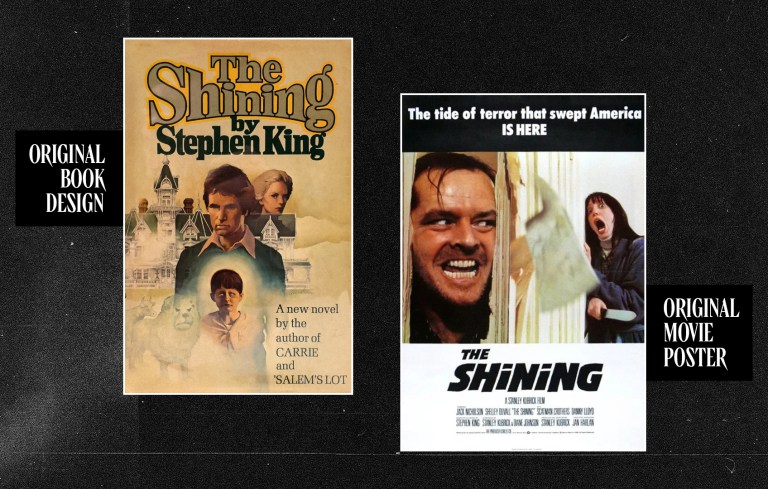
Stanley Kubrick’s The Shining is regarded as one of the finest works in the horror genre. However, it notably received pushback from author Stephen King, for Kubrick took the story’s foundation but implemented several fundamental changes.
As noted in Far Out Magazine, King’s work supports “biblical demarcations of good and evil,” and King felt that Jack Torrance was inherently a good man who succumbed to evil forces that bent him toward the wicked. On the other hand, Kubrick’s depiction is less biblically conventional and turns Torrance into a psychopath whose descent into madness is a reflection of humanity alone.
Ideas of heaven and hell and god vs. satan are virtually amiss in the on-screen adaptation. The book relies much more on supernatural elements — as is customary of Stephen King — while the film takes a more tangible, grounded approach.
King praised Kubrick for his ingenious, but argued, “What’s wrong with [Stanley Kubrick’s] The Shining, basically…the movie has no heart; there’s no centre to the picture. I wrote the book as a tragedy, and if it was a tragedy, it was because all the people loved each other. Here, it seems there’s no tragedy because there’s nothing to be lost.”
Despite King’s comments, the movie is regaled as a masterclass in horror — a terrifying descent into madness that spotlights a spine-chilling Nicholson in a narrative maze that keeps viewers guessing.
1. Psycho (1960)
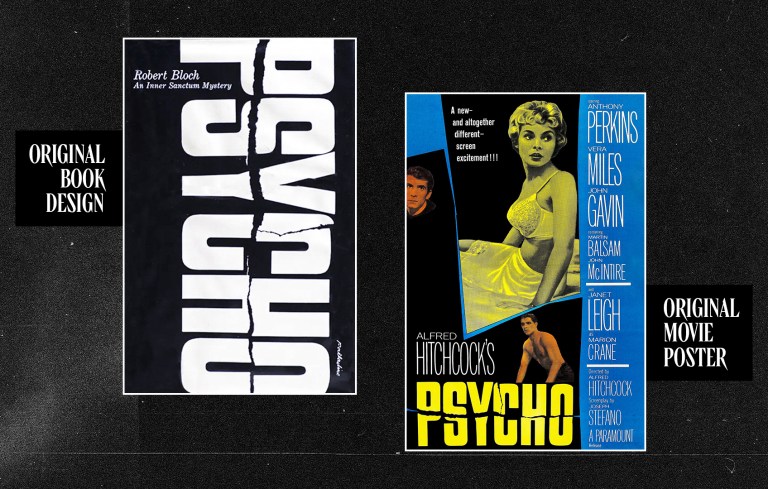
Alfred Hitchcock’s Psycho is based on Robert Bloch’s novel of the same name published in 1959. The author also penned American Gothic, Yours Truly, Jack the Ripper, Stange Eons, and more, yet Psycho remains his most prolific work. Though the novel provides a deeper journey into Norman Bates’ mind than the film does, this works toward the movie’s advantage, adding a layer of mystery and intrigue to the infamous slasher. Viewers discover just enough about Bates’ broken mind to draw their own frightful conclusions.
Hitchcock’s artful camera techniques in Psycho have shaped the horror genre across decades. He employs the camera to conceal the truth, to fabricate Norman’s mother, to align the audience with the victim’s perspective. And who could forget the screeching sound that accompanies “the scene” — the shower slashing that will be discussed in cinematic history books for decades to come? The score alone operates as a character in Psycho, using high-pitched keys to provide an auditory stimulus just as frightening (if not more so) than the visual one.
Psycho is an esteemed example of style and substance working in perfect harmony. Hitchcock creates a terrifying yet tactful horror film that draws viewers in. At first, you observe like a suspicious fly on the wall, before wishing to jump into the screen to change the inevitable course of events. Anthony Perkins delivers an unnerving turn as Norman Bates — a charmer who somehow breeds both trust and trepidation — as the narrative unfolds piece by piece, in gripping Hitchcockian fashion. There is a reason he was and forever will be The Master of Suspense.
More Horror Movies Based On Books
- The Amityville Horror (1979) Based on Jay Anson’s 1977 novel of the same name, this reportedly true story follows the Lutz family whose home falls under attack by evil spirits.
- Cujo (1983) Man’s best friend turns into his worst enemy after he’s bitten by a bat and morphs into a beast on a rampage in this thriller based on the Stephen King novel of the same name.
- Hellraiser (1987) A suspicious box opens a portal to hell and releases “the cenobites — beings brainwashed into torturing humans — in this film franchise based on Clive Barker’s The Hellbound Heart.
- Misery (1990) Yet another Stephen King adaptation, this movie stars Kathy Bates as a woman who takes her favorite author hostage and forces him to write the character ending she desires for her beloved protagonist.
- Interview with a Vampire (1994) Based on Anne Rice’s novel of the same name, this horror movie, gloriously laden with homoerotic undertones, stars Brad Pitt and Tom Cruise as vampires on an epic journey of immortality.
- The Ring (2002) Based on Koji Suzuki’s Ring novels, the 2002 film stars Naomi Watts as an investigative journalist trying to get to the bottom of a mysterious videotape that leads to death one week after its viewing.
- It (2017) Pennywise the clown is a demon who terrorizes, torments, and eats children in this 2017 adaptation of the Stephen King novel. The 1990 miniseries starring Tim Curry follows the same narrative.
- Gerald’s Game (2017) There’s a reason we call Stephen King The King of Horror. King’s Gerald’s Game is a largely underrated but intimate suspense tale that follows a woman (Carla Gugino) left handcuffed to her bed after her husband dies during sex. She must fight to survive and break free.
